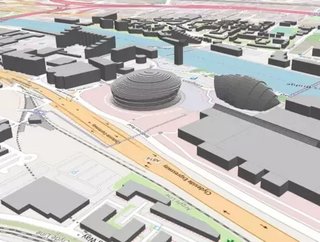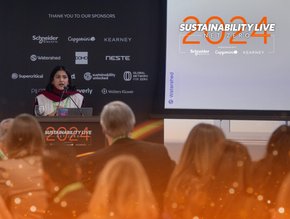SSE and IES showcase digital twin model at COP26

SSE and IES will highlight potential net-zero solutions via a digital model of COP26 venues.
A ‘digital twin’ of the campus location has been developed and will be showcased at the UN’s climate conference. The campus includes the SSE Hydro, SEC Armadillo, SEC Centre, car parks and surrounding land. The campus’ management is committed to reducing the environmental impact of its operations and is actively working with SSE on a number of fronts to achieve its sustainability goals.
Part of SSE’s AR Demonstrator Platform for Smart Cities, the virtual campus will give visitors the ability to immerse themselves in a live representation of the site. This will allow people to discover what future net zero solutions could look like, provide an understanding of how this could be achieved and potential results.
The ’whole system approach’, which accelerates the transition to net zero and creates a more resilient and sustainable energy system, consists of:
- sustainable and renewable energy supply
- solar & battery storage
- wind turbine power generation
- electric vehicle charging hubs
- decarbonised heat networks
- 5G data aggregation
- buildings management systems
- and human waste power conversion plant
The AR rendering of the campus is accessed through a tablet or smartphone camera which provides an on-screen display of the entire campus. Users can then select buildings or systems – such as water usage or smart lighting – to discover the breadth of green potential within a live digital twin model.
With buildings responsible for around 40% of carbon emissions, digital twins are a vital tool in the drive toward a net zero future. They are virtual versions of physical assets – such as buildings – underpinned by machine learning, artificial intelligence and physics-based simulations which mimic real-world equivalents.
They enable future scenarios to be tested and assessments to be made virtually which are then used to inform and de-risk decision-making in terms of energy use, CO2 emissions and other aspects of the drive to net zero.
Don McLean, CEO at IES, which has led the development and application of digital twin technology in the built environment, said: “The Digital Twin we have developed with SSE has provided the opportunity to demonstrate how collaborations can unlock new thinking and drive forward novel approaches on the decarbonisation issue.
“In joining forces in this way, we aim to provide an example of what can be achieved and how end users can accelerate their own journey toward net zero.”
Stephen Stead, Director of Strategy and Digital Services at SSE Energy Solutions, said: “COP26 gives us a great platform for engaging with the public and communities on the complex issue of climate change. Digital twins are a great way of demonstrating and communicating large complex scenarios to promote the message of decarbonisation as we all move towards net zero. With cutting edge technologies we can set the framework for decarbonising heat, power, and transport.”
To read more on IES' growth and efforts to decarbonise the environment, click here.






